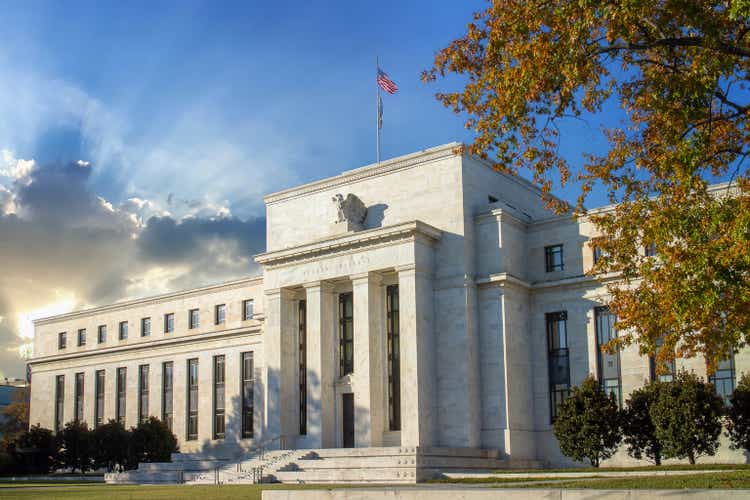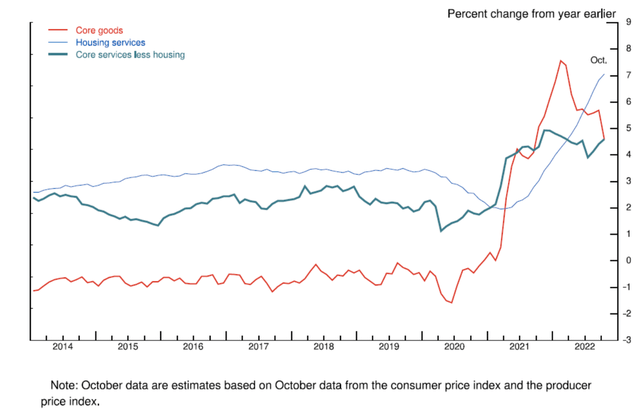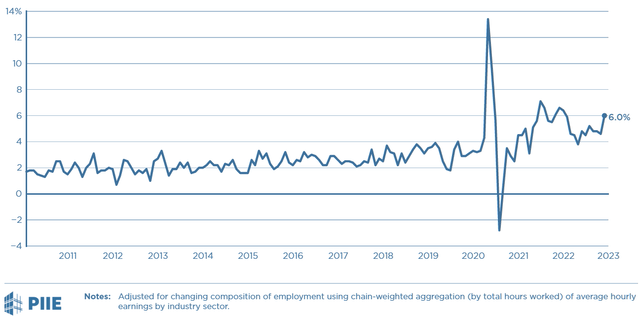Tanarch
In his presentation last Wednesday (November 30) at the Brookings Institution, in Washington-DC, Jerome Powell, president of the Federal Reserve (‘Fed’), signaled a smaller increase in the US basic interest rate as a decision for the next FOMC meeting on December 14. Expectations now converge to an increase of only 50 basis points this time, after four consecutive meetings with increases of 75 basis points. From almost zero in March of that year, the basic rate would end the year in the range between 4.25% and 4.5% per annum.
On the other hand, Powell noted that inflation in the US remains high. He mentioned an estimate that, in the 12 months up to October, inflation in personal consumer spending was at 6% per year. Interest rates will have to reach restrictive levels enough to bring inflation down to 2% a year. He mentioned that there is still more ground to cover by the Fed, what suggests that there will be some additional increase of interest rates in 2023.
Monetary tightening is aimed at slowing demand growth relative to aggregate supply, he said, which will require a sustained period of below-trend US economic growth. Despite the monetary tightening and slower pace of growth this year, he was still not seeing clear progress in curbing inflation.
Powell’s presentation divided the focus between inflation and the job market. The motivation for this was evident when he addressed the three core components of the inflation rate: goods, housing, and services other than housing (Figure 1). While the core inflation of goods declined from high levels throughout the year, housing services continued to rise at a rate of 7.1% in the last 12 months. Powell noted, however, the substantial drop in the pace of price rise in new leases since the middle of the year.
Figure 1 – Components of Core PCE Inflation
Source: Powell (2022).
Powell highlighted the services less housing component, the largest one, making up more than half of the core price index. It includes education, health services, haircuts, hospitality and so on. He attributed a very large role to this component in projecting the evolution of the core of the index.
As salaries constitute the main cost in these services, it follows the importance of observing the labor market to analyze inflation in this category. According to Powell, at the moment the demand for workers far exceeds the supply of available labor, which has been accompanied by a rise in nominal wages well above what would be consistent with 2% inflation over time. Therefore, a restoration of balance between supply and demand in the labor market would be a relevant item to consider inflation to be contained.
The report on non-farm payrolls – known as the “jobs report” – released last Friday corroborated Powell’s points about the job market, showing better-than-expected job creation and accelerating wage growth. Despite slowing in November, U.S. jobs growth beat expectations. Average salary gains registered an annualized increase in the last three months above the one that occurred in the last twelve months (Figure 2).
Figure 2 – 3-month percent change in average hourly earnings in all private industries
Source: Dynan and Powell III (2022).
The unemployment rate remained stable at 3.7%, but the labor force participation rate fell slightly from 62.2% to 62.1%, down from 63.4% in February 2020, before the pandemic. The “great resignation”, as the mass exit of workers from the labor market during the pandemic became known, has not been largely reversed.
In the Brookings presentation, Powell mentioned a “shortfall” of about 3.5 million people in the workforce compared to pre-pandemic trends. More than two million of those absent would correspond to an “excess of pensions” in relation to what could be expected due to an aging population. Among the reasons for this, in addition to greater concern for health by older people and difficulties in adapting to changes in the work environment, he cited gains in stock markets and property values in the first two years of the pandemic as factors increasing personal wealth and facilitating early retirements. About the remaining one and a half million workers absent from the offer, he cited the rise in deaths in the pandemic and the deep decline in the net inflow of immigrants.
He also said that the Fed does not have the tools to increase the workforce, leaving it with instruments that operate on its demand to achieve balance. With the opening of jobs being at a level of 1.7 for each person looking for work, the compression in demand would still be relatively distant.
Powell justified in advance the reduction in the pace of increase in the basic interest rate in December, mentioning the time lag between monetary policy decisions and their effects on the economy, which is quite uncertain, and the fact that the rapid and intense tightening so far this year has yet to be felt. However, he noted that what matters most is how much it still must rise and the length of time it should remain tight.
The stakes are split between those who think FOMC rates will go up to 5% or more before a break. If the pause is premature, there is a risk of a future spike in inflation and an even greater tightening afterwards, as occurred in the Volcker era. If it passes the point, the macroeconomic slowdown and the increase in the unemployment rate will be accentuated.
Eyes will evidently also be turned to the financial repercussions of rising interest rates. In this regard, attention is drawn to the fact that longer interest rates – such as those for 10-year Treasury bonds – are far from reflecting the extent of the rise in basic interest rates.
However, it is in the labor market that the Fed’s monetary policy script will be written. Judging by Powell’s presentation and given outstanding fears of price-wage spirals.




Be the first to comment